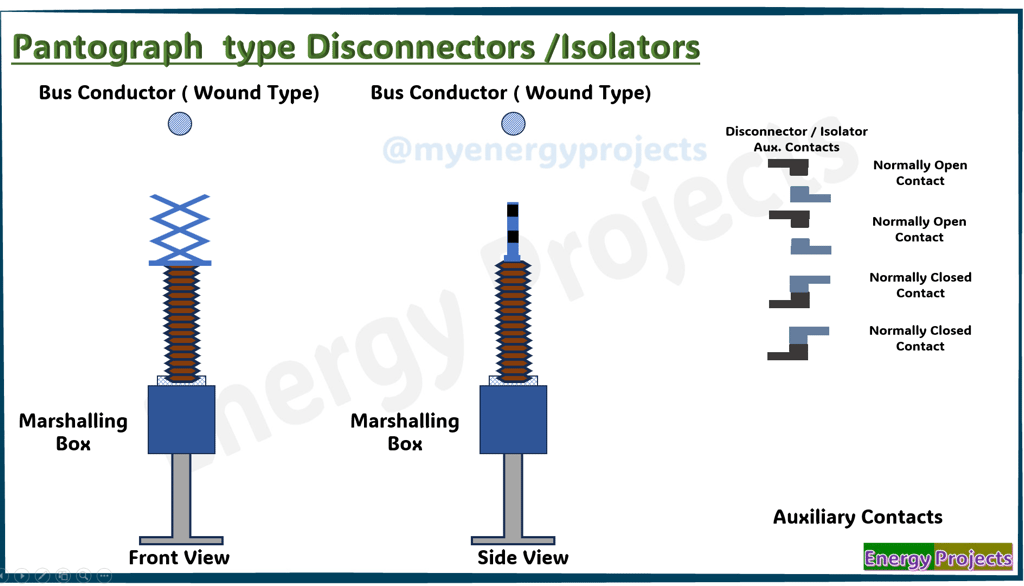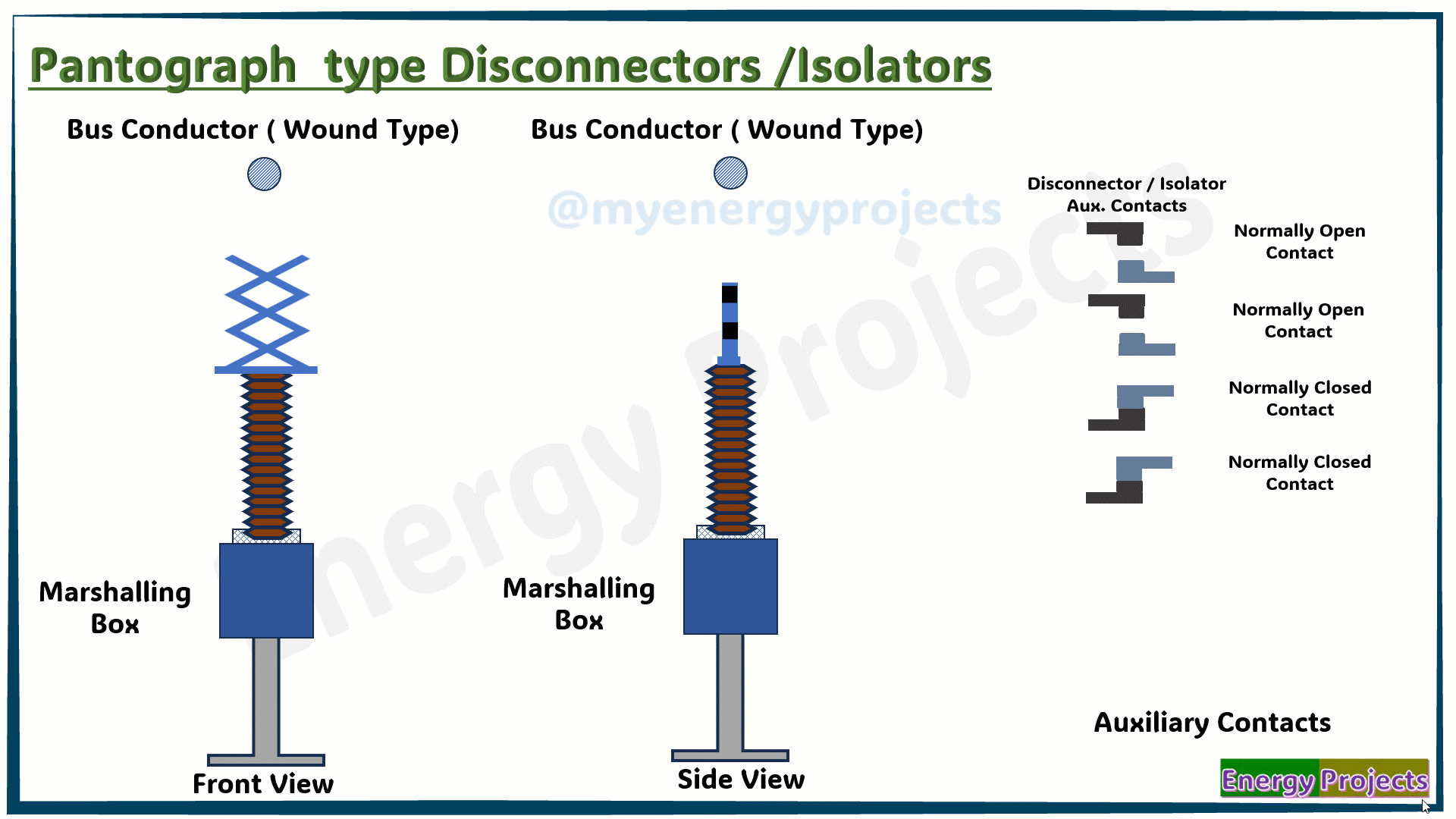02.Pantograph type Disconnectors /Isolators


Single Busbar Configuration
Single Busbar with Bus section Configuration
Single Busbar with Transfer busbar configuration
Single Busbar with Bus section + Transfer bus coupler + Section Isolator configuration
Double Busbar with Bus coupler Configuration
Double Busbar with Bus coupler + Bypass Isolator Configuration
Double Busbar with Bus coupler + Transfer Buscoupler configuration
One and Half Breaker Busbar Configuration
Busbar Configuration
Track Sequence of Engineering
A Pantograph Type Disconnector is a high-voltage isolator designed to interrupt the circuit at a single point with a vertically moving arm that engages or disengages a fixed contact. Unlike horizontal double break designs, the pantograph disconnector operates in a vertical plane, allowing for a compact footprint and minimal phase spacing—ideal for installations with limited horizontal space. Its upward or downward motion creates a visible air gap that ensures safe disconnection. This type of disconnector provides reliable performance in high-voltage substations, especially where vertical clearance is available & suspension type Pipe Busbar Arrangment. Operation can be either manual or motorized, depending on the application requirements.
Advantages
Offers reliable isolation with clear visual confirmation for improved operational safety.
Requires less horizontal installation space due to its vertical, compact design.
The streamlined structure enhances mechanical stability and system integration.
Ensures fast and efficient disconnection, especially suitable for compact substations.
Disadvantages
Design complexity is greater compared to single-break or horizontal types.
Higher installation cost due to the need for specialized components.
Maintenance may be slightly more challenging due to vertical movement and positioning.
Must be operated only when the system is fully de-energized, as it cannot interrupt load current.
Operation:
The Pantograph Type Disconnector operates by moving a contact arm vertically to engage or disengage a fixed contact point, thereby interrupting the circuit at a single location. It must only be operated when the circuit is de-energized to ensure safe and effective isolation. Unlike horizontal designs, the pantograph mechanism moves in a vertical direction, making it well-suited for compact substations with limited horizontal space


